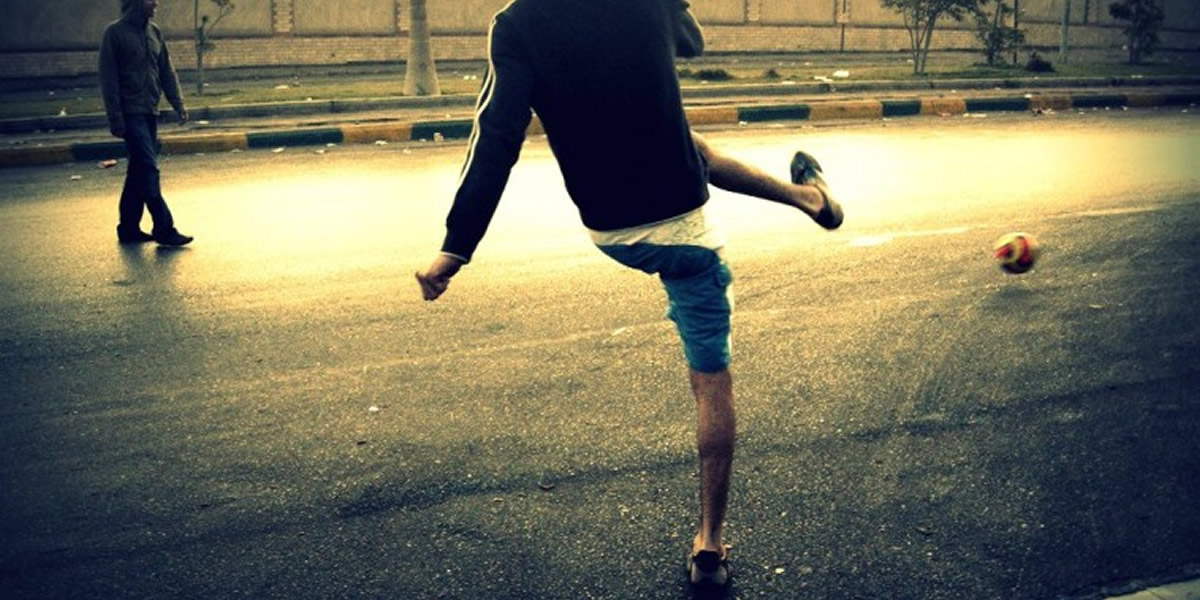First Touch – How to Improve Your Most Important Skill
Your ability to control the ball with your first touch is vital in all forms of football, but in five-a-side football, where space and time is limited, it is the key to becoming a great fives player.
So, how can you improve your ball control?
As with any skill, whether it be shooting, tackling, or playing the trumpet, practice is the key. In fact, it is deliberate practice that matters. Most five-a-side players tend not to work on specific skills purely for fives (unless as part of a general football coaching/training regime) – their practice usually happens just through playing regularly.
However, given the speed at which 5-a-side is played, how can you really focus on your first touch technique while playing? You’re more likely to just revert to natural instinct and do what comes natural as you do not have time to think about every detail of your technique.
If you want to make big improvements in your first touch then you will need to deliberately focus on your technique.
Improving Your First Touch – The Basics
If you’re going to practice, you first need to get the right technique. So, what aspects of good ball control do you need to consider? Before receiving the ball, while it is still in flight, you need to be thinking about these 3 key points -
- First, get yourself in the direct path of the ball
- Second, decide which part of your body you’re going to use to stop the ball with
- Finally, present as large a surface area as possible to receive the ball
When you make initial contact with the ball, there are 2 ways to control it -
- ‘Wedge’ control – where you use a more solid part of body (e.g. sole of foot) to force the ball down (trap) or into space in which to move
- ‘Cushion’ control – where you take the sting out of the ball, relaxing the body part/surface as it makes contact with the ball, allowing ball to drop in front of you.
Training Drills
Here are the drills that you need to practice, a couple that you can do alone, one that you can do with your team mates.
- This is a drill that you can do at any time and in any place. Just grab a ball and stand in front of a good solid wall (preferably one that doesn’t have windows). Now just hit the ball off the wall, focusing on receiving the ball and maintaining control. Try to vary the height and velocity of the ‘passes’, using different body parts to control the ball.
- This second drill is similar to the first, but instead of hitting the ball off the wall, I want you to hit it high up into the air and practice bringing it back down under your control. Remember, get yourself in the flight of the ball and present as large an area as possible to make contact with it and bring it under control.
- For this one, you’re going to need all five of the players on your team (so it’s perfect as a bit of a warm up exercise). 4 players stand in a square, each with a ball at their feet and about 10ft away from the next player. The 5th player stands in the middle of the square. Each of the outer players takes it in turn to pass the ball to the centre player, who must return the ball with one touch. He/she then turns clockwise to receive the ball from the next outer player. Keep moving round, increasing speed, and take it in turns to be the player in the middle.
Improving Your First Touch – The Next Step
OK, so you have the basics sorted, but as we discussed earlier, how often in a game do you have the time and space to judge a ball in flight and control it before deciding your next move?
Taking these basic first touch skills into a fast-paced, crowded five-a-side pitch will result in one or more of the following outcomes -
- at best, slow the game down
- more than likely, lose possession of the ball to the opposition
To really be effective you need to take basic ball control skills to the next level, manipulating the ball under pressure and in tight situations. Before you even receive the ball you need to know what you’re going to do with it. You need to know your own position, where the opposition are in relation to you and where the available space is.
You’re probably already being marked pretty tight, and if not then you are going to get closed down very quickly. You are going to need to control the ball quickly and then shield it from the opposition. Stand firm and place your body between the path of the ball and the opposition marker/player. Control the ball with the foot that is placed furthest away from the marker.
To maintain the attacking momentum you need to keep the ball moving. Rather than using two touches to control the ball and then move it, you need to use that first touch to play a pass, move the ball into space or take a shot.
One of the most difficult situations in a game is to control the ball when you are moving at speed and keep the momentum. In this instance, you should try to control the ball without breaking stride – relax and mentally slow yourself to prepare for receipt of the ball. If you can, shift the direction of the ball to deceive the defence and move it into space.
Conclusion
The ability to take control of a ball and make it do what you want on the pitch is the single most important skill you can master for five-a-side football, and the only way to do this is to practice the basics.
Practice enough and practice right, and the technique will become second nature.
During practice, remember these key points and you’ll become a five-a-side football master.


